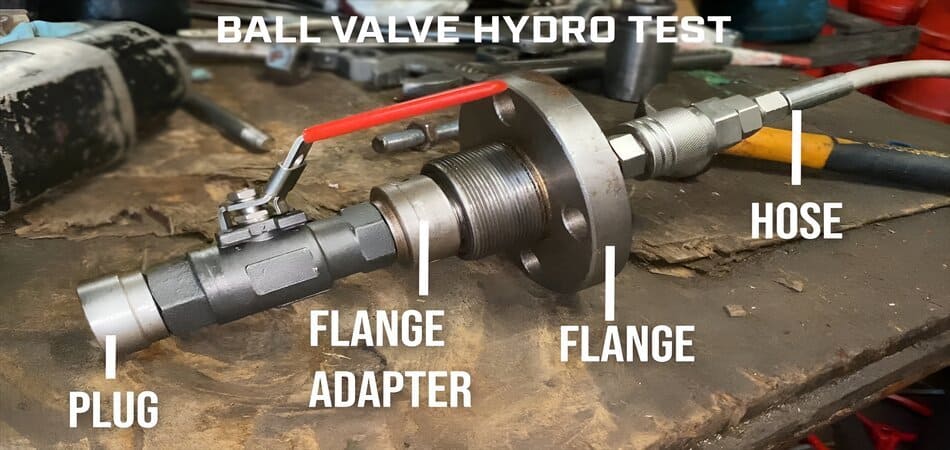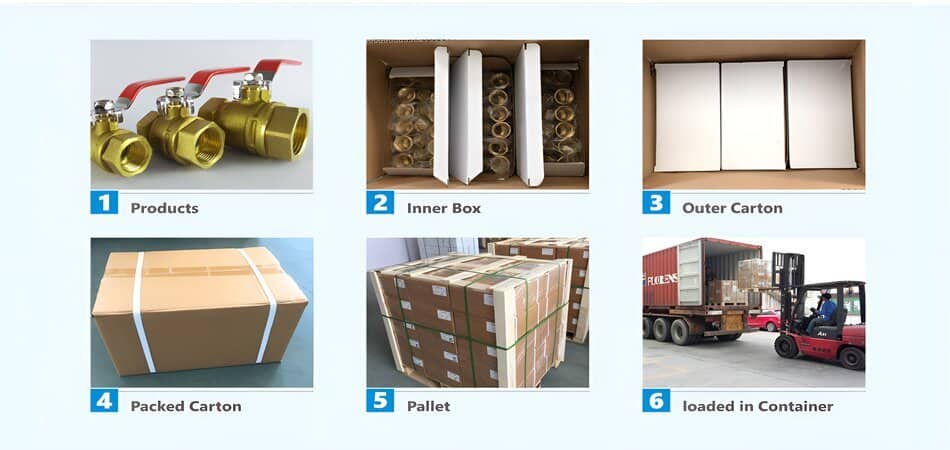It is not a simple task to export ball valves to any nation, particularly from China to Europe. Nevertheless, you can accomplish it successfully by utilizing the right means. Owing to the language difference, the majority of English-speaking nations fail when they try to enter the Chinese market. Valve importers can benefit a lot by utilizing some of the ball valve manufacturers in China. A large number of manufacturing firms in China trade a vast range of valves, particularly ball valves, at a reasonable price. Research carried out by various companies has shown that firms importing from China are ahead of other companies. Such suppliers and traders of valves are based in foreign nations, particularly the United States and some European nations. In this article, we are going to introduce ten vital factors for valve importing.

Steps to Import Ball Valve from China to the USA
Product Compliance and Certification
Due to strict American standards, standards conformity and certification are necessary when importing Chinese ball valves. Chinese ball valves need to be made of heavy-duty materials, have high pressure and temperature ratings, and have safety designs. They need to be ASME B16.34 and API 6D compliant for application in oil and gas industries. Drinking water valves need to be NSF/ANSI 61 certified to ensure non-toxic materials. For hazardous environments, ATEX or CSA certifications are vital for explosion-proof constructions.
The majority of Chinese suppliers do not know U.S. requirements. So, third-party testing is required for firms such as SGS or Intertek. Non-complying shipments can be detained by CBP; 12% of imports of valves were excluded in 2022. Always request Material Test Reports (MTRs) and Certificates of Conformance (CoC). Also ensures that forgings valves must be EN 10204 3.1 certified.
Supplier Verification
Choosing authentic Chinese suppliers reduces the risk of fraud, and poor quality. Use Alibaba Trade Assurance or Global Sources to mark suppliers. You must emphasis on their ISO 9001 certifications. Legal registration should be verified through crosschecking of business licenses on the China National Enterprise Information System. Proper inspections should be performed to estimate factory condition and equipment.
Engage an independent auditor, Asia Inspections, to verify production capacity, raw material origin, and lead time. In 2013, about 15% of U.S. importers had falsification fraud in unverified suppliers and materials. Order destructive tests to verify thread accuracy (NPT vs. BSP) and pressure ratings (e.g., 1,000 PSI).
Logistics and Incoterms
Picking proper Incoterms is very impactful because it dictates cost distribution, logistical responsibilities, and transfer of risk. Free On Board (FOB) moves risk to customers when departing Chinese ports. Ex Works (EXW) shifts the entirety of the logistics procedure on importers, which involves export clearance and transferring of goods locally. Sea freight via 20-foot container (FCL) with shipment from Shanghai to Los Angeles is approximately $1,800 to $3,500. Airfreight is approximately $5 to $8 /kg making air freight a great option for emergency orders with shipments less than 500kg.
DHL Global Forwarding is a great freight forwarding company. It partner for handling lading bill, cargo tracking, and documentation of customs clearance. Customers are experiencing wait times up to 10-20 days for deliveries with the busy U.S. West Coast ports. So it is important to factor in that as a buffer. Lastly, be sure to always ensure packaging products are ISTA 3A compliant.

Tariffs, Duties, and Customs Clearance
Ball valves must comply with tariffs, duties, and customs clearance requirements for importation into the United States. Ball valves classified under HTS 8481.80.0040 will sustain a 2.5% MFN, whatever that is, for their duty, plus the 25% section 301 charges. Remember, if the price is below fair value, anti-dumping duties can apply. In 2021, Chinese steel valves were slapped with a 75.5% duty.
For imports, you should contract or utilize a customs broker like Livingston International, which is licensed to file through the Automated Commercial Environment (ACE) and review your likely compliance declaration that comes with a Commercial Invoice that must be detailed, including HS codes. These transaction values are correct, and descriptive. There are tools like Flexport’s Duty Calculator to calculate factoring in tariffs, freight landed costs, and insurance. If you make errors in the classification of HTS codes if this is done willfully, it is a violation of 19 U.S.C. 1592; under that section, penalties can arise in the range of 10% to the value of the shipment by way of audit.

Inspection and Quality Control
When importing ball valves from China, quality control and quality assurance are critical components; defective valves will cause operational failures as well as legal and/or recall problems. Please require Pre-Shipment Inspections (PSI) to be performed by third parties like QIMA or SGS. These facilities will ensure that the ball valves will conform to the specifications, performance, and materials articulated in the purchase orders. The inspectors will work with an AQL (Acceptable Quality Level) 2.5, which allows 2.5% of the manufactured valves to be defective in a single batch of valves.
Critical ball valve defects include leakage, which must be tested at 1.5 times the working pressure. The test are conducted for incorrect threading (NPT vs. BSPP); or inferior materials (304 vs. 316 stainless steel). When pressure testing, you must simulate real-world operating conditions. Oil and gas valves are tested for 30 minutes under API 6D hydrostatic tests at 1,100 PSI. You can use XRF analyzers to verify that materials meet the requirements, e.g, ASTM CF8M for stainless steel and the appropriate ASTM for carbon steel. In the end, for cryogenic valves tested at -196°C, Charpy V-Notch impact tests are important to verify the ductility of valves.
Insurance and Liability Coverage
Maritime cargo insurance insures your cargo against accidents such as fire, storm, and robbery in transit to its destination. For maritime cargo insurance, “All Risk insurance” insures almost all types of loss and damage save some that are defined in the policy. 110% would be paid to the insured on the cargo, including the firm worth of the products, freight, and insurance. It also includes cost factors such as custom charges, currency loss, and storage fee.
Nearly 2-5% of Chinese valves imported into the U.S. were considered damage with most being water leaks. The average loss per piece was $15,000. They make sure their policies, warehouse-to-warehouse outdoing competitors, are thorough, recognizing products insurers like AGI or Chubb. In short, the imports of procedure say Chinese-origin, are insured up to when they arrive and appear in the U.S. markets.
Considerations Regarding Labeling and Packaging

Proper labeling and packaging methods need to be applied in order to prevent damage and allow speedy customs clearance. Sea export of stainless steel ball valves needs to be wrapped around with VCI paper and filled with desiccants in wooden cases. Rust-proofing can be achieved by means of epoxy coating and rust-proofing zinc plating of carbon steel valves. The item must include HTS codes, safety information (e.g., “Max Pressure: 1,000 PSI”), and “Made in China” in 12-point font. Military items should be supplied according to MIL-STD-2073-1E. Install an anti-tamper seal and fill with shock-absorbing material. Waterproof shipping documents should accompany it, showing weights (kg/lbs), valve serial numbers, and diameters. The lack of bilingual marking—English/Chinese—or deceptive origin markings prompted Customs and Border Protection (CBP) to suspend shipments worth 7% in 2023. To prevent suspensions, keep airfreight box weights under 100 kg. Use FedEx or DHL for easy door-to-door tracking.
Post-Import Compliance and Assistance.
Supplier valves are stored in free zones. These are FedEx Trade networks, awaiting the arrival of the buyer. This is to ensure that payment of duty prior to sale. In accordance with the FM standard, it is permissible to sell ball valves for fire protection systems with or without a marking that has been certified by a third party or classified by Underwriters Laboratories. This is the case regardless of whether the marking is present or absent. The item is delivered with a warranty covering the defects in both the materials and the craftsmanship that was utilized in its production.
US customers buy their products from distributors offering post-sale service. Spare O-rings, stems, and seals are available in the box, as well as breakdown lists. Automating tasks such as route guarantee and recorder alarm automation is enabled through the adoption of enterprise resource planning (ERP) platforms like SAP.
Environmental Factors and Legal Certification
Preventing recalls / penalties depends on U.S. environmental rules compliance. Potable water valves must be less than 0.25% and certified for conformity under the Safe Drinking Water Act utilizing the NSF/ANSI 372 test. Conversely, electronic act valves show cadmium control to less than 0.01%, RoHS Directive, and mercury to less than 0.1%. They sell every current Hong Kong address supplier because of IP infringement since they want to offer the of most importance in the REACH SVHC report. They release Safety Data Sheets on lubricants and coatings. Conducting environmental tests causes 40% of Chinese Yangtze River Delta facilities to fail release criteria. Under the Environmental Protection Agency, three importers in the USA consented to pay $120,000 for 2023 sale of non-compliant leaded brass valves.
Summary
In the end, you will have to carry out your duty as a ball valve importer. You may then bring in ball valves according on your applications and returns. Importing ball valves from China into the United States requires comprehensive knowledge. You must know all government rules and taxes both inside and outside. You have to know how much your initiatives will cost. All transportation and taxes have to be calculated. Make sure the ball valve you’re bringing in will help you make money; otherwise, bringing valves from China to the United States is not worthwhile.
